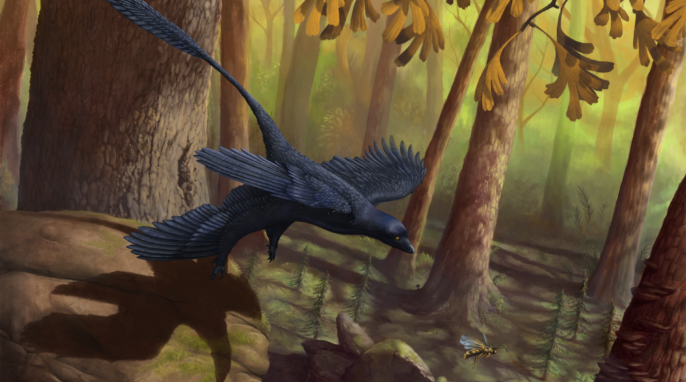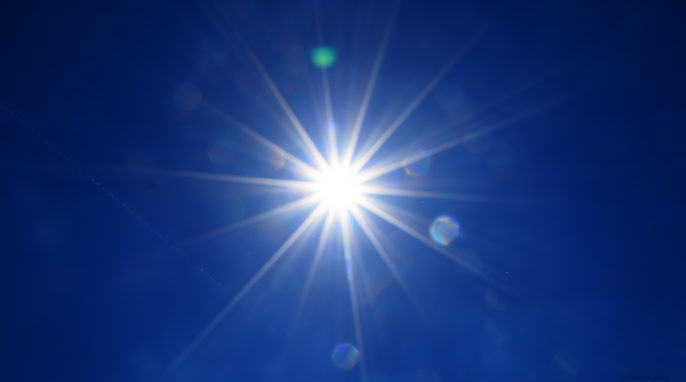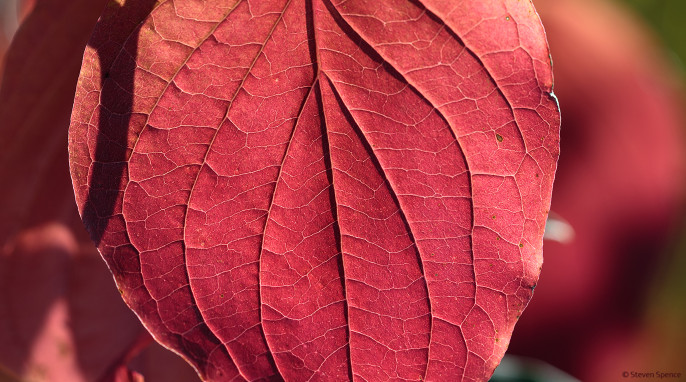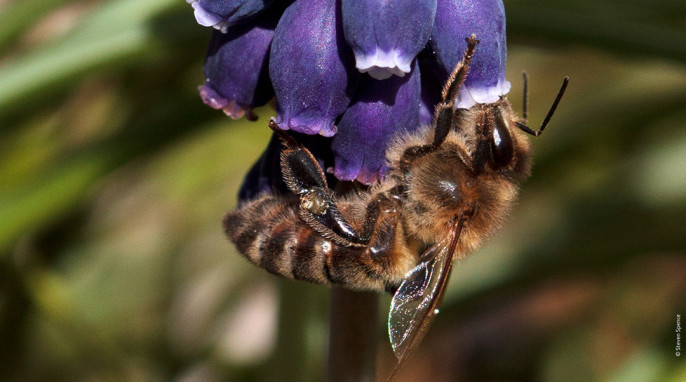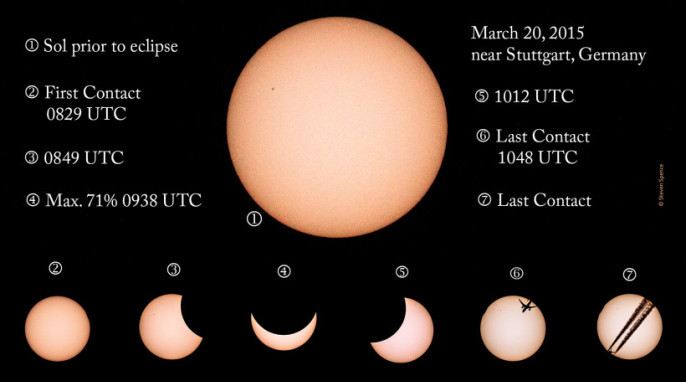The Official Science Blog of Steven Spence

Steven Spence is an amateur photographer who also writes about general science subjects. He enjoys photography, nature, science and is an avid fan of Calvin and Hobbes. Steven’s writing may cover topics ranging from bees to fossils to astronomy and almost anything else that captures his interest. Left unsupervised, Steven sometimes spray paints quotes from Douglas Adams, Terry Pratchett or Carl Sagan on the walls. We thought it best to put him in a separate, safe space.
The Secret Lives of the Elements
The Secret Lives of the Elements by Dr. Kathryn Harkup was released in the UK in October 2021. The reviewed copy from Mobius Books is from the US release in March 2022. Reviewed by Steven Spence @TheStevenSpence I immediately noticed the distinctive cover by Luke Bird (design) and Jo Parry (illustrations). The paneled design with ...
Photographing the Northern Lights in Iceland
Photographer Steven Spence chased the aurora borealis, or Northern Lights in Iceland and got some fantastic photos. Find out how he did it. By Steven Spence For night's swift dragons cut the clouds full fast,And yonder shines Aurora's harbinger;At whose approach, ghosts, wandering here and there,Troop home to churchyards. — Shakespeare, A Midsummer Night's Dream ...
Wildlife Game of Thrones: Wolf and Crow
Steven Spence visits the wolves at Wildpark Bad Mergentheim in Germany and photographs a contest for food between the wolves and crows. By Steven Spence “Through the bleak and early morn, Where a stronger will is sworn,Where the moments move so slow,And seem to never let you go.”—Excerpt, “The Wolves and the Ravens” by Rogue ...
The Periodic Table of Elements
Pull up a chair and sit down to the Periodic Table and Sorting Elements, a series from Steven Spence. Part One: The Difference Between Chemical and Nuclear Reactions In a previous series, (Part 1, Part 2, Part 3), we examined the origin of elements. All those processes involved either the strong nuclear force or the ...
Forged in the Hearts of Stars
Steven Spence, Part Two of Baking an Apple Pie from Scratch (figuratively). Let's consider the early universe and the elements forged in the hearts of stars. In the preceding post, we examined the very beginnings of our universe. We saw how primordial nucleosynthesis created a universe consisting primarily of Hydrogen [H] and Helium [He] with ...
Neutrons, the Early Universe, and Apple Pie
Steven Spence looks for a recipe and discovers the oven at the beginning of the universe. Welcome to neutrons, the early universe, and apple pie. Due to the COVID-19 lockdowns, I have worked from home for over a year. That also has meant cooking lunches. I noticed that looking up a recipe on the internet ...
Why am I writing a science blog?
Steven Spence shares his motivation for writing his science blog entitled There be Dragons Everywhere and the power of asking questions. “Because it’s there.” –George Mallory Mount Everest towered over all other peaks, defiant, unconquered, an ultimate mountaineering goal. George Mallory could not pass up the challenge. Despite “primitive” (by today’s standards) equipment and several ...
How I got into science blogging
Blogger and photographer Steven Spence explains how he got started in science blogging and amateur science communication. By Steven Spence How in the world did I wind up in science communication? Curiosity and a determination to share original work on social media. “In its encounter with Nature, science invariably elicits a sense of reverence and ...
A Tale of Two Turtles: Part 1
Steven Spence visits Jacksonville Zoo and Gardens to photograph aquatic turtles with many names: the Arrau River turtle or giant South American turtle. By Steven Spence It began simply enough, visiting the zoo with my niece and her parents. They have a great love of animals. We figured, what better place to spend time together? ...
Citizen Science Informs Bird Feeder Dilemma
Do you have a bird feeder at home? Fifty percent of Americans do. Learn how to feed the birds without causing them to crash into your window. By Jonathan Trinastic @jptrinastic If you enjoy turkey this Thanksgiving, take a moment to think not about the bird on your plate but rather the birds outside your home ...
Improving the Periodic Table
Find out why the Periodic Table of Elements is systematically brilliant. Also, get two free periodic tables that you can download and print for your classroom or dining room wall. By Steven Spence Series: The Periodic Table and Sorting Elements – Part 3 Sorting Hat: Houses The Periodic Table is brilliant for providing information about ...
Drumming with the Great Spotted Woodpecker
Meet the great spotted woodpecker. Learn where and how to spot them, and what they sound like. Photos and audio included. By Steven Spence Drumroll, Please! May is family time for the great spotted woodpecker. Woodpecker pairs will have begun their courtship at the end of winter, a ritual that involves the male drumming his ...
Urban Gardens a Haven for Pollinators
Insect-friendly urban gardens show great promise to be havens for bees and other pollinators, securing their future and allowing them to thrive. By Mackenzie Myers A pollinator-friendly habitat may conjure up images of wide-open meadows bursting with wildflowers, far from the hustle and bustle of cities. But a new study from researchers in Aachen, Germany, ...
Organic Gardening and Alternatives to Pesticides
Gardens inevitably attract insect pests. How can you use organic gardening techniques to protect your plants from pests and maintain a garden that is safe for pollinators and other animals? By Steven Spence Gardens are a delight Sadly, it’s not just gardeners, bees, butterflies, and birds that enjoy our beautiful springtime gardens. Gardens inevitably also ...
Dinosaur Diets at the Jurassic Dinner Table
Sauropods were the largest land animals ever on earth, and many different species of them lived close together, so how did they all find enough food for their dinosaur diets? Fortunately, research from the University of Bristol and the Natural History Museum, London can answer this question. Sauropods, large, long-necked plant-eating dinosaurs such as Diplodocus ...
Learn about the Aurora
A roundup of articles all about the amazing Aurora Borealis, or Northern Lights. Find out what causes them and where to get a good view of this beautiful phenomenon! The Science Behind the Aurora Borealis The aurora borealis (the Northern Lights) is much more than a pretty light displays in the night sky–it’s a perfect ...
Norwegian Sea Eagles
Scientifically known as Haliaeetus albicilla, these large raptors are commonly known as sea eagles or white-tailed eagles. By Steven Spence Two Names for One Eagle: Which Is Right? Scientifically known as Haliaeetus albicilla, these large raptors are commonly known as sea eagles or white-tailed eagles. “Sea eagle” is an accurate translation of the genus name, ...
Hotspots of Bat-Human Virus Transmission
Covid-19 is not the first pandemic to strike humanity, and it won't be the last. Scientists are investigating bat-human virus transmission. By Neha Jain Since the turn of the century, we’ve already been gripped by three major outbreaks of new diseases—SARS in China, MERS in the Middle East, and Ebola in Africa—that have had devastating ...
Chemical Reactions: Periodic Genius
Chemical reactions are essential. They put oxygen in our blood, salt in our food, and batteries in our phones. Find out why the periodical table is so brilliant. By Steven Spence Series: The Periodic Table and Sorting Elements – Part 2 Chemistry Happens In Part 1 of this series, we looked at the difference between ...
The Difference Between Chemical and Nuclear Reactions
Pull up a chair and sit down to the Periodic Table and Sorting Elements – Part 1: The Difference Between Chemical and Nuclear Reactions By Steven Spence Chemical vs. Nuclear Reactions In my first series of blog posts (Part 1, Part 2, Part 3), we examined the origin of elements. All those processes involved either ...
Structural Coloration in Bird Feathers
Peacocks are known for their bright colors, but those bright colors aren’t a result of pigmentation. It's called structural coloration. By Steven Spence Pimping Your Ride, the Natural Way If you are familiar with Pimp My Ride, a TV show about customizing old cars, you will know that one of the key elements in each ...
Elements, Heavy Metal, and the Death of Stars
Where do heavy elements come from? Part Three of Baking an Apple Pie from Scratch (figuratively) examines how stars create heavy elements with more Protons than Iron. By Steven Spence In Part One of this three-part series, we introduced fundamental particles, protons, and neutrons. We saw how primordial nucleosynthesis produced light elements up to Boron ...
Pollination: Meet the Pollinators
Meet the pollinators! These are the birds, bees, and more that handle pollination so that we can enjoy the fruits of their labors. By Steven Spence Pollination Currently there is significant concern about the decline in honeybee populations. There are various factors behind the decimation of the hives, but first some fundamental questions: Why do ...
Ladybirds and Other Natural Pesticides
Aphids in your garden? Ladybirds, or ladybugs in your garden are natural pesticides. Read on for photos and tips about chemical-free gardening. By Steven Spence Sheep and Wolves in your Garden Sheep and wolves in your garden? It’s more likely than you may think. Aphids (leaf lice) are pests, which are tended by shepherd ants, ...
Osprey: A Bird of Many Names
This bird may be called an osprey, a fish hawk, a river hawk, a sea hawk, or even a fish eagle! Learn more about the osprey. By Steven Spence guān guān jū jiū ‘Fair, fair,’ cry the ospreys 关 关 雎 鸠 zài hé zhī zhōu On the island in the river. 在 河 之 ...
Forests Alone Can’t Stop Climate Change
Ecologist Nicolas Medina explains how fossil-fuel use impacts forests and drives climate change. Carbon may run deeper than you think, and forests alone can't stop climate change. By Nicholas L. Medina The US is the second-largest emitter of greenhouse gases after China, and President Obama has called climate change a “national and global security threat.” ...
What to Read: Asteroid Hunters
On any given day, about 90,000 kilograms of dust and small rocks hit the Earth. What happens when something larger is on a collision course with Earth? That's what Asteroid Hunters is about. Asteroid Hunters by Carrie Nugent Contributing Bookworm: Steven Spence Published by Simon and Schuster / TED Books Recommended for ages 12 and ...
Sunsets are Illusions
What are sunsets? To human eyes, they are very cool optical illusions. Learn about light scattering, visual perception, and how to photograph sunsets. By Steven Spence “It is sometimes said that scientists are unromantic, that their passion to figure out robs the world of beauty and mystery. But is it not stirring to understand how ...
Genome Revelations: How Green Plants Evolved
By Jacqueline Mattos Plants are ancestral organisms that have evolved over millions of years, leading to the broad diversity we see today. Green plants evolved from a common ancestor into approximately 450,000–500,000 species today. There are many gaps in understanding of their diversification that scientists still struggle to fill. In a recent paper published in ...
What Does a Black Hole Look Like?
In 2019, humanity was treated to a “photograph” of a black hole [1]. Technically, it wasn't a photograph, but it was the first visual interpretation of a black hole devouring matter. By Steven Spence “We ordinary people might lack your great speed or your X-ray vision, Superman, but never underestimate the power of the human ...
The Science Behind the Aurora Borealis
The aurora borealis (the Northern Lights) is much more than pretty lights--it's a perfect blend of solar wind and magnetic fields. Let''s check out the science behind the aurora borealis. By Steven Spence The northern lights (aurora borealis) and southern lights (aurora australis) are fascinating scientifically. In fact, aurora is not unique to the Earth ...
Oumuamua: Asteroid from Another Star System
In October 2017, astrobiologist Karen J. Meech got the call every astronomer waits for: NASA had spotted the very first visitor from another star system. The interstellar comet -- a half-mile-long object eventually named `Oumuamua, from the Hawaiian for "scout" or "messenger" -- raised intriguing questions: Was it a chunk of rocky debris from a ...
This Interstellar Asteroid Is Accelerating
Oumuamua is an asteroid traveling so fast, it could go from the moon to the earth in 73 minutes! See the speedy asteroid with the U. of Hawaii telescope. By Steven Spence First asteroid of its kind In October 2017, Oumuamua—or 1I/2017 U1—became the first interstellar asteroid detected by humans. It also changed how comets ...
Juno: What’s Jupiter Hiding?
The Juno spacecraft currently orbiting Jupiter is appropriately named. In Roman mythology, Jupiter created a veil of clouds to hide his escapades with Io from his wife, Juno, but Juno was able to peer through the clouds and foil his plan. By Steven Spence Juno: Aptly named The Juno spacecraft, currently on its 11th science ...
Tips for a Bee-Friendly Garden
By Steven Spence @TheStevenSpence More Diverse Than Honeybees When we hear about bees most of us think of honeybees (Apis mellifera) but there are many more bees around us. In fact, there are approximately 4000 native bee species in North America. Some of the most familiar types are bumblebees, mason bees, carpenter bees, and leaf ...
Book Review: Bring Back the King
Title: Bring Back the King: The New Science of De-extinction Reviewed by: Steven Spence Author: Helen Pilcher Publisher: Bloomsbury (Sigma Series) Best for: High school and up Playing on both T. rex and Elvis Presley in the title and text, Helen Pilcher covers some serious, cutting-edge science in her breezily written book Bring Back the King: ...
Book Review: God’s Word or Human Reason?
Title: God’s Word or Human Reason? An Inside Perspective on Creationism Reviewed by: Steven Spence Authors: Jonathan Kane, Emily Willoughby, T. Michael Keesey, Glenn Morton, and James Comer Publisher: Inkwater Press Best for: High school junior level and above “People are not stupid. They believe things for reasons. The last way for skeptics to get ...
Spaceman: An Astronaut’s Unlikely Journey to Unlock the Secrets of the Universe
Title: Spaceman: An Astronaut’s Unlikely Journey to Unlock the Secrets of the Universe Author: Mike Massimino Publisher: Simon and Schuster Best for: teen and up Reviewed by: Steven Spence Mike Massimino, former space shuttle astronaut and current professor at Columbia University, shares his path with us in this autobiography. Spaceman: An Astronaut’s Unlikely Journey to ...
Secrets of the Seas: A Journey into the Heart of the Ocean
Title: Secrets of the Seas: A Journey into the Heart of the Ocean Reviewed by: Steven Spence Author: Callum Roberts Photographer: Alex Mustard Publisher: Bloomsbury Natural History Secrets of the Seas: A Journey into the Heart of the Oceans is an extraordinary book. Visiting multiple ocean locations, the author and photographer offer glimpses of marine ...
Parasitic Bees: Natural-Born Robbers
By Steven Spence Photography by John Kimbler When we think of bees, most of us picture honeybees or possibly bumblebees. In fact, there are over 20,000 species of bees. Some are social, such as honeybees and bumblebees, while others are solitary. Bees typically build nests, collect pollen and nectar, and care for their offspring. Some ...
Book Review: Galapagos: Preserving Darwin’s Legacy
Title: Galapagos: Preserving Darwin's legacy, Second Edition Author: Tui De Roy Publisher: Bloomsbury Natural History Best for: General science audience, age 12 and up Reviewed by Steven Spence Tui De Roy wrote the first edition of this book to commemorate the 50th anniversary in 2009 of the Charles Darwin Foundation’s establishment in the Galapagos Islands ...
Hot Towns, Urban Heat Islands
By Steven Spence It’s Hotter in the City Have you ever noticed on weather reports that cities seem to be hotter than the surrounding areas? That’s a result of the Urban Heat Island (UHI) phenomenon. According to the Environmental Protection Agency, urban areas with 1 million or more residents have a mean annual temperature 1°C ...
How Do Bees Make Honey?
How bees make honey, courtesy of Dr. Joe Hanson and PBS Digital Studios Western honey bees, or European honey bees, are responsible for pollinating about three quarters of the crops we eat. But bees may be more famous for the ability to make sweet, sweet honey. Watch as Dr. Joe explains how bees make the ...
Eocene Fossils: The Mines of Messel
The Messel Pit Fossil Site near Darmstadt, Germany, was named a UNESCO World Heritage site in 1995. Where is Messel and what was found? By Steven Spence Gimli: "And they call it a mine. A mine!" Boromir: "This is no mine, it's a tomb!" (Film: Lord of the Rings) In November 2015, it was my ...
Forest People: Sumatran Orangutans
Good news from the jungles of Sumatra: extensive survey shows that more than twice as many orangutans live in Sumatra as previously thought. By Steven Spence Good news from the jungles of Sumatra: thanks to an extensive survey, biologists now know that more than twice as many orangutans (Malay/Indonesian from orang = person and hutan ...
Hubble Space Telescope Got the GOODS!
By Steven Spence The Hubble Space Telescope has been conducting a deep-sky survey called “Great Observatories Origins Deep Survey North,” or GOODS North. The GOODS data has enabled astronomers to extend their view of galaxies back 150 million years further than any previously identified galaxy. The distant galaxy GN-Z11 was in the first generation of ...
Spying on the Atomic Structure of Perovskites
By Jonathan Trinastic, @jptrinastic Spying on the Atomic Structure of Perovskites Perovskites are darling materials in the world of solar cells but still somewhat of a mystery to scientists. Perovskite-based photovoltaics boast a combination of high performance and cheap production that makes them an ideal candidate to lead the next solar energy revolution. Like many young ...
Using the Power of Photography for Good
Photographer Chris van Wyk enjoyed viral success with his pictures of an algae-covered “punk” Mary River turtle. Major news outlets around the world published his photos. The media attention affected decisions related to preserving the turtle’s habitat. Steven Spence, reporting for Science Connected, asked Chris about the experience. The following essay is an edited version ...
A Tale of Two Turtles: Part 2
By Steven Spence This is the second part of our series on turtles and how cute animals can inspire successful conservation efforts. Have you read A Tale of Two Turtles: Part 1? Best-Looking Turtle in the World Chris Van Wyk, photographer and conservationist, was in the right place at the right time to capture incredible ...
Autumn Leaves: Last, Loveliest Smile
By Steven Spence Going Out in a Blaze of Glory Autumn … the year's last, loveliest smile. (William Cullen Bryant) Fall is my favorite season for many reasons, but foremost among them is the joy I feel when surrounded by thousands of patches of light in a cacophony of colors all rustling in the wind ...
Sunsets are Illusions
What are sunsets? To human eyes, they are very cool optical illusions. Learn about light scattering, visual perception, and how to photograph sunsets. By Steven Spence “It is sometimes said that scientists are unromantic, that their passion to figure out robs the world of beauty and mystery. But is it not stirring to understand how ...
Unexpected Biodiversity in Iberian Butterflies
Nature photographer and blogger Steven Spence has good news to share with you about butterflies and biodiversity on the Iberian Peninsula. By Steven Spence Winged Flowers A fallen blossom returning to the bough, I thought - But no, a butterfly. (Arakida Moritake, Traditional Japanese Poetry: An Anthology) [落花枝にかへると見れば胡蝶哉 守武 落花枝にかへると見れば胡ちょかな 守武] Butterfly at the edge ...
Jurassic Celebrity: Early Bird Gets the Spotlight
By Steven Spence A Lasting Impression For its sheer beauty, the Berlin specimen of Archaeopteryx has been described as a “paleontological Mona Lisa” by Dr. Luis M. Chiappe of the Natural History Museum in Los Angeles. Without a doubt it is one of the most attractive fossils that I have ever seen. It is striking ...
Mounting a Monument to a Mesozoic Monster
Renowned paleontologist Dr. Dave Hone explains how the largest mounted dinosaur skeleton in the world was put together. Photography by Steven Spence. By David Hone Dr. Dave Hone is a lecturer at Queen Mary, University of London, specialising in dinosaurs and pterosaurs. In addition to writing for The Guardian, he blogs at Archosaur Musings, is ...
Searching for Alternatives to Antibiotics
As bacteria mutate and become increasingly resistant to our arsenal of antibiotics, scientists try to find alternatives to antibiotics. By Steven Spence A Biological Arms Race Modern, effective antibiotics were only discovered and widely used in the 20th century. The most famous antibiotic discovery was penicillin (Fleming, et al 1928), which only began to be ...
Friendly Neighborhood Raptor Dinosaurs
Raptor dinosaurs large curved talons on the second toes of their feet. A similar feature is seen on some modern raptors such as eagles and hawks. Why? By Steven Spence Raptor dinosaurs, formally known as dromaeosaurids, had very large curved talons on the second toes of their feet. A similar feature is seen on some ...
Piecing Together the Archaeopteryx Puzzle
The scientific consensus today is that Archaeopteryx is one of the earliest birds. Find out why these fossils have had such a big impact. London specimen of Archaeopteryx (photographed with permission from theNatural History Museum) By Steven Spence Bird, Dinosaur, or Both? The 1861 discovery of Archaeopteryx made it one of the most important fossils ...
Amazing Hummingbirds: Dancing in the Air
Are you wondering how a hummingbird flies? The flight skills of these tiny birds put our airplanes and helicopters to shame. By Steven Spence Dancing in the Air A hummingbird puts fixed-wing aircraft and helicopters to shame. Not only can it hover, it can also fly forward, backwards, sideways, and even upside down! During a ...
Biologist Explains How We Learn to Catch
Would you like to know how our brains process the information we need to catch or throw? A scientist explains how we learn to catch. By Kate Stone If you’ve ever played baseball or football and fumbled a catch, then wondered why, you are in the right place. A biologist has come up with a ...
Declining Bee Populations Revisited
Are we headed toward a future with no bees? Declining Bee Populations Revisited covers what we know about bee hive collapse and recovery. By Steven Spence Given mounting evidence of rapidly declining bee populations, what would be the impact if there were no more bees? As we have seen, there are many other pollinators, including ...
Yaffle: Meet the European Green Woodpecker
By Steven Spence “Yaffle” was one of the English folk names given to the European green woodpecker (German Grünspecht; Latin Picus viridis) due to its distinctive, laughing call. The European green woodpecker spends most of its time foraging on the ground instead of pecking holes in trees as most other woodpecker species do. The bird ...
Wild Red Kite: Red and Deadly
Photography and Text by Steven Spence This is a wild red kite (German: Roter Milan; Latin Milvus milvus ), which lives mainly in Germany, Poland, France and Spain, but is seen in other parts of Europe. Black kites (German: Schwarzer Milan; Milvus migrans) are more widespread and more often encountered. Red Kite Population and Range ...
Solar Eclipse from Stuttgart, Germany
On March 20, 2015, people across Europe, northern and eastern Asia, and northern and western Africa were treated to the best view of a partial solar eclipse. Steven Spence, a member of EH Science’s Contributors Community, was fortunate to witness this special celestial event, and today he shares with us his experience of photographing it ...
Winter Bees, First Visitors
This photo of a winter bee collecting pollen, called “First Visitors,” is the work of Germany-based photographer Steven Spence. Here is what he has to say about the photo: Friday, I had my first visit from a bee this year. Right now all that is in blossom around my place are crocuses, but that seems ...



















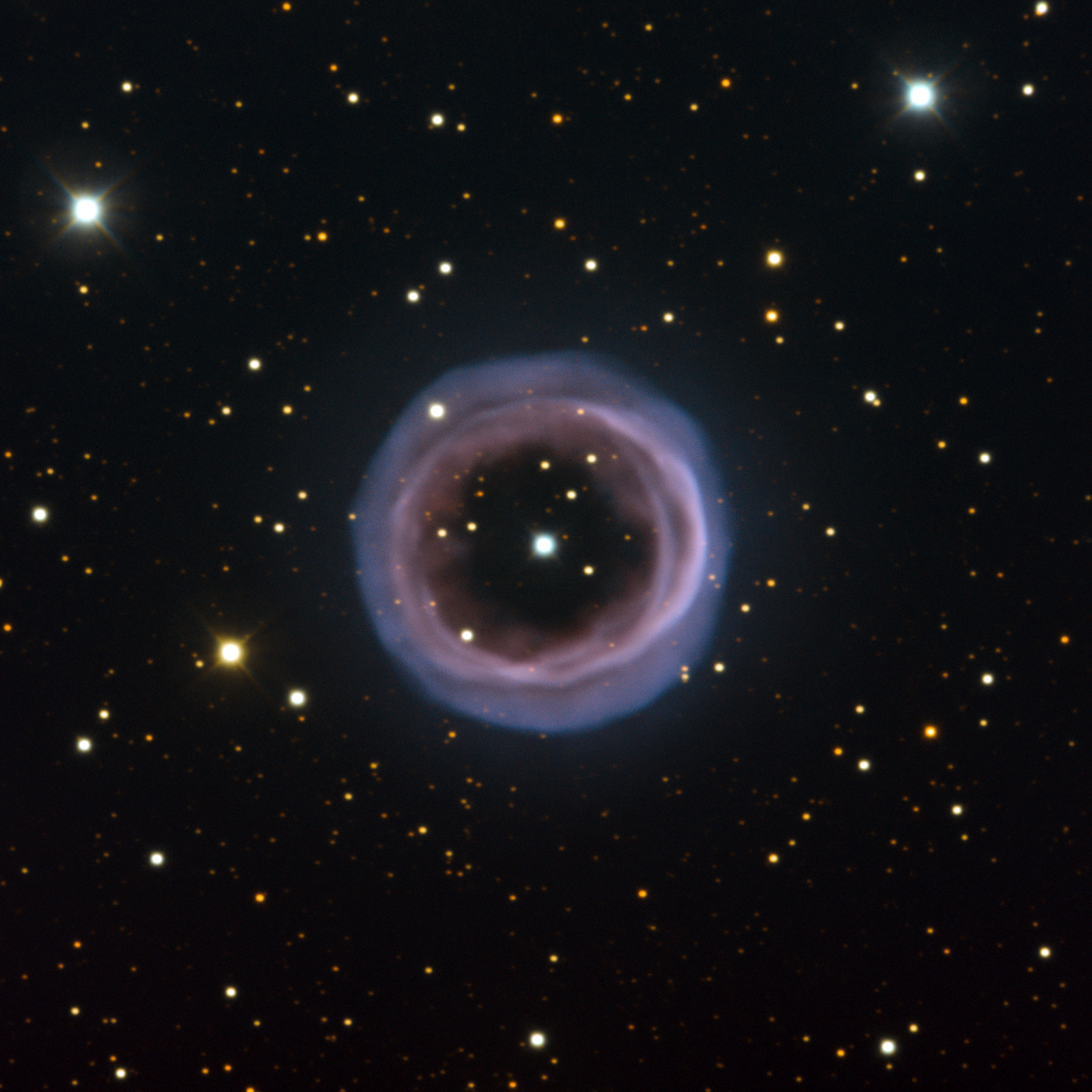
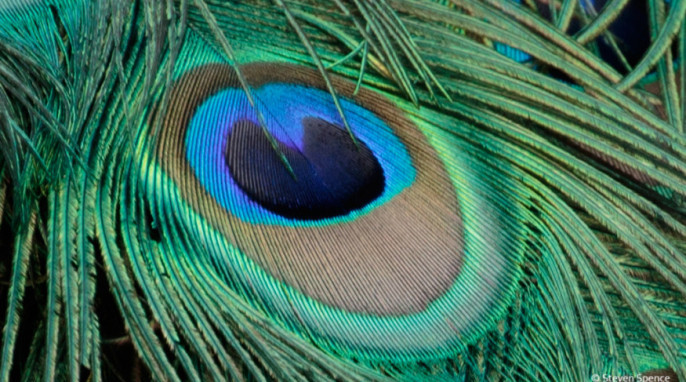






![Sunsets: Sunset seen at the coast in Novigrad, Croatia. Thin clouds turn a normal sunset into a sci-fi worthy sunset. [EOS 7DmkII: 400mm, f5.6, ISO 100, 1/2000 sec]](https://magazine.scienceconnected.org/wp-content/uploads/2015/09/3A4A2828-down-cropped-2058-1146-e1443210710946.jpg)







